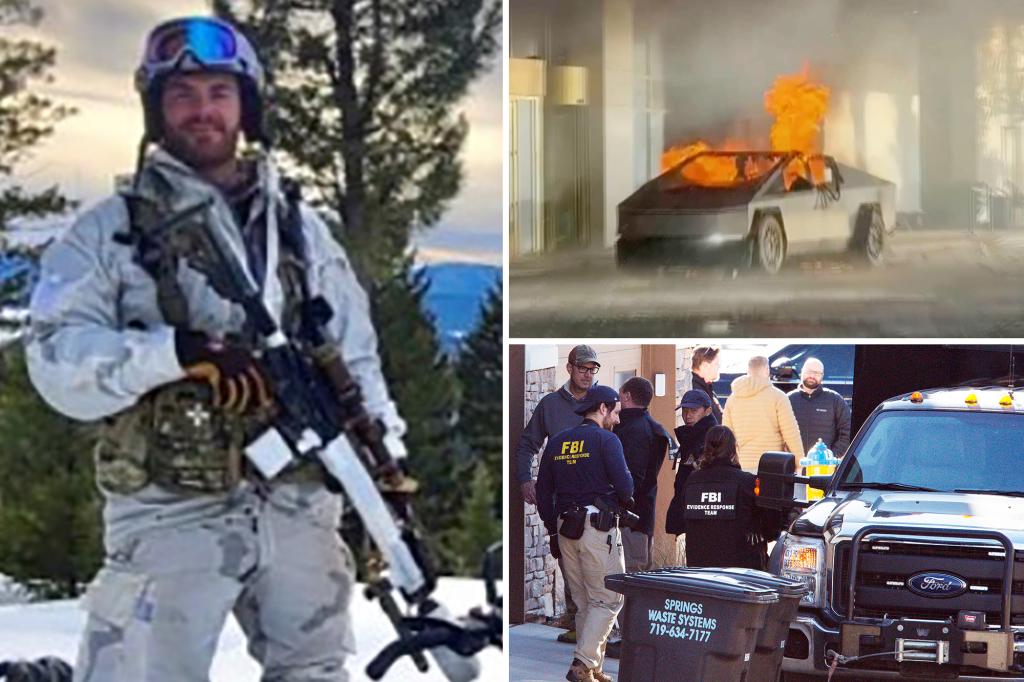The explosion of a Tesla Cybertruck outside the Trump International Hotel Las Vegas has thrust Matthew Livelsberger, a decorated Green Beret, into the spotlight, leaving a trail of questions and contradictions in its wake. Livelsberger’s uncle, Dean Livelsberger, an Air Force veteran himself, paints a picture of a man deeply devoted to his country and to former President Trump. Dean describes his nephew as a “Rambo-type” patriot, highlighting his extensive military service, which spanned at least 19 years, including time in the Special Forces. Social media postings further corroborate this image, depicting a man who openly expressed his love for America and his support for Trump. This patriotic persona clashes starkly with the alleged act of domestic terrorism Livelsberger is accused of perpetrating.
The nature of the explosion itself raises further questions. Given Livelsberger’s extensive military training and expertise in technology and engineering, particularly his specialization in remote and autonomous systems, Dean expresses skepticism about his nephew’s sole involvement and the relatively limited damage caused by the blast. He argues that a “supersoldier” with Livelsberger’s skills and experience could have engineered a far more devastating explosion, capable of inflicting significantly greater damage. Dean posits that if Livelsberger truly intended to cause widespread harm, he possessed the knowledge and capability to create a device with far greater destructive power. This discrepancy between Livelsberger’s capabilities and the actual impact of the explosion fuels Dean’s suspicion that there may be more to the story than meets the eye.
The official narrative provided by law enforcement points unequivocally to Livelsberger as the perpetrator. Las Vegas Metropolitan Police Department Sheriff Kevin McMahill stated that Livelsberger took his own life moments before the explosion, sustaining fatal injuries that rendered his body nearly unrecognizable. However, key pieces of identification, including his military ID, passport, phone, and smartwatch, were recovered from the burnt vehicle, linking him directly to the scene. Furthermore, two distinct tattoos found on the charred remains matched Livelsberger’s known body ink, solidifying the identification. The FBI concurred with this assessment, confirming Livelsberger as the prime suspect. Despite this seemingly conclusive evidence, the motive behind the attack remains shrouded in mystery, and investigations by both the police and the FBI are ongoing.
The complexity of the situation is compounded by the fractured family dynamics surrounding Livelsberger. Dean reveals a strained relationship with his brother, Livelsberger’s father, marked by multiple marriages and children with different women. This estrangement created a distance between Dean and his nephew, limiting his insight into Livelsberger’s recent life and potential motivations. This familial disconnect further contributes to the overall sense of bewilderment surrounding Livelsberger’s alleged actions, leaving unanswered questions about the personal struggles or influences that might have led him down this path.
The apparent contradiction between Livelsberger’s patriotic persona and the violent act he is accused of committing creates a perplexing puzzle. Was he a disillusioned patriot driven to extreme measures, or was there a more complex, perhaps even orchestrated, plot at play? The relatively low impact of the explosion, compared to Livelsberger’s apparent capabilities, raises the possibility of unforeseen circumstances, technical malfunctions, or even the involvement of other actors. Could he have been manipulated or coerced? The ongoing investigation will hopefully shed light on these crucial questions.
Ultimately, the case of Matthew Livelsberger remains an enigma. The image of a dedicated soldier and ardent patriot clashes sharply with the accusations of a violent attack. The limited damage caused by the explosion, given Livelsberger’s expertise, raises questions about his true intentions and the possibility of other factors at play. The ongoing investigation, burdened with unraveling the complexities of Livelsberger’s life and motivations, holds the key to understanding this tragic and perplexing event. The answers may lie in the intricate details of Livelsberger’s military career, his personal struggles, and the possibility of hidden influences that remain to be uncovered.

